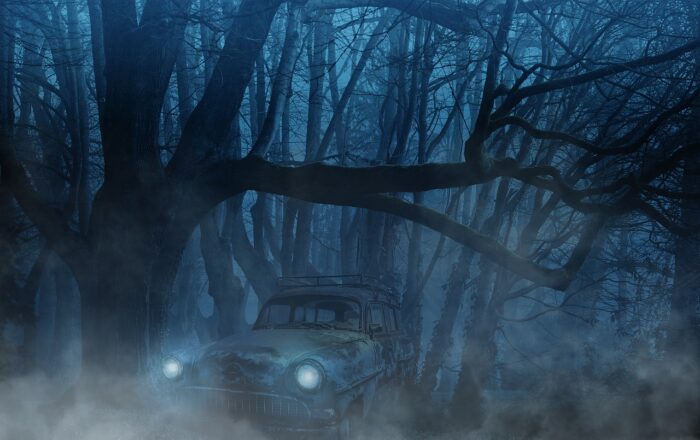It’s a well-known fact that a good story needs a plot, setting, and characters. But what about point of view? What about style? What is the theme of the story you’re writing? These are all elements of a thrilling story!
In this blog post, we’ll talk more about the 7 Elements of a Story: Character, Plot, Setting, Point Of View (POV), Style, Theme, and Literary Devices – called ‘the writer’s tools.’ These include humor, irony, and personification. Also worth a mention is the use of figures of speech such as metaphor and tone, the underlying feeling of the book.
What is a thrilling story?
A story is about how things that happen affect someone trying to reach their most important goals and the changes they suffer in the process.
Thrillers generally keep the audience on the “edge of their seats” as the plot builds towards a climax. The cover-up of important information is a common element. Plot twists and cliffhangers are used extensively in thrillers. A thriller is often a villain-driven plot, presenting obstacles that the protagonist must overcome.
When you think about it – elements of a story are all around us! We have factors to consider when telling stories orally or writing them down because these aspects show our creativity as authors to engage readers with excitement while meeting the expectations.
Character – who is your protagonist, and what do they want in life?
ettingThe protagonist is the character who changes or grows in some significant way due to their experiences and whose actions are most important to the plot.
Their motivation needs to be understandable – what drives them? What do they fear losing if they don’t reach their goal?
Make sure your protagonist has an antagonist working against them and blocking their path. It doesn’t have to be a person – nature itself can act as an obstacle (e.g., thunder and lightning). Determine what kind of conflict you will put your protagonist through – what do they need to overcome?
As you read through your story draft, ask yourself if each scene contributes something useful to advancing your protagonist’s journey towards her goal. If not, then cut it out!

Plot – an eventful series of incidents in which one incident follows another
How will you create conflict for your protagonist so they can’t achieve their goal quickly? First, the plot must be believable – readers will only stay engaged if they buy into what’s happening.
The plot is the arrangement and movement of events in a story or drama. Elements that define the structure and sequence of these elements include inciting incidents, climaxes, falling action, resolutions, etc.
It could be something like this:
Jason is a murder suspect? Jennifer barely remembered how she got through the day. She hurried home after work, desperate for solitude. Back in her apartment, she collapsed on the sofa, feeling too heavy to move. If only the police would find him, then there’d be no reason for the thugs to come after her. But Jason wouldn’t make it easy for anyone to recognize him. For anyone but me.
She jumped when her phone rang. She checked the display. Unknown. She waited for the machine to take over. A few minutes later, she checked her messages.
“Don’t even think about describing me,” Jason hissed, then signed off.
Jennifer backed away from the phone, staring at it as if he’d seep out of the receiver like a homicidal genie. She covered her face with her hands. Keeping his secret wasn’t working. I’m falling apart. She had to do something.
Her fears won out, and she scrambled to find Rusty’s number.
Setting – where do the events take place, when does it happen, and why did you choose this setting?
Let’s say the setting is a house – why is the protagonist in this specific house? What does it look like on the inside and out? Is there something interesting about it that will come into play later in the story (e.g., a secret room)?
Now, let’s say you want to use a setting other than a house. How can you make sure readers can see how it looks? You can describe the setting in literally any way you want.

Here are some examples of settings:
– The air shimmered with heat and dust, like a mirage (a desert)
– It was early April when I arrived at Elm Pointe Retirement Home. A cool late winter breeze still swept through the valley, leaving behind the scent of lemongrass.
-Jennifer shuddered at the scenery. A dirty towel nailed to the upper window frame covered the only window in the cabin. Below it stood a tubular steel chair with a peeling vinyl seat. The grimy Formica tabletop had doubled as an ashtray. Dirty dishes, canned food, half a bottle of water, and a few slices of moldy bread sat atop a rusty woodstove behind the table. On the floor, caked with dirt and mouse droppings, lay a sagging, soiled mattress with a dirty sleeping bag on top. Pieces of clothing hung from nails. Calendar pictures of naked women had been tacked to the walls and used as dartboards.
Point-of-view (POV) – which character’s perspective will be used to tell the story, the first person or third person?
First-person point of view
The narrator is a character in the story and uses I/we throughout. Writing in the first person means writing from the author’s point of view or perspective.
For example:
I didn’t want to stay at the party and slipped out when no one could see me leave.
Third-person point of view
The author is narrating a story about the characters, referring to them by name, or using the third-person pronouns “he,” “she,” and “they.”
For example:
She didn’t want to stay at the party and slipped out when no one could see her leave.
It can also be omniscient, which means that you know every character’s thoughts at all times.
Theme or message behind the story
Often the theme of a story is a broad message about life. The story’s theme is essential because it is part of why the author wrote the story, which can be a vital part of understanding how and why the story was written and allows you to see if it ties in with your values, experiences, or worldview. It might also help influence how much you enjoy the book/story and give insight into its purpose and meaning for the author.
Though the theme is essential for understanding a work of fiction, it can also make or break your appreciation of other works as well. If you disagree with the message/theme behind something, it changes how you read into it and what importance you place upon different aspects within the story.

Writing Style
The tone, mood, and writing style reflect your characterization, enhancing the setting, theme, and plot. In addition, elements like diction (word choice), descriptive language, figurative language like metaphors, etc., dialogue help you convey feelings between characters and demonstrate their personalities.
Elements like the point of view (POV), tense, and the narrator’s voice all contribute to your overall style. These elements help you convey a particular mood or atmosphere for the setting and tone; they also enhance the plot and characters in some way.
Here is an example:
“You’re sure you can drive?” Jennifer said, throwing Cathy a suspicious glance.
“It’s my turn.” Cathy started the car and moved onto the highway. She drove with her body close to the steering wheel, her eyes staring ahead like a freaked-out ostrich.
A few minutes later, Jennifer told her to stop. Cathy didn’t seem to hear her. Finally, Jennifer yelled “Cathy!” in her ear.
Cathy flinched. “Yes?”
“Aren’t you going a bit far with this ‘my turn, your turn’ thing? You’re cross-eyed, for Chrissakes. I’m in danger here. Let me drive.”
Cathy blinked and slowed to a stop. She turned a grey face to Jennifer. “You’re in better shape than I am?”
Jennifer grunted. “Let’s just say I’ve partied more. Move over.”
Literary devices
Literary devices like climaxes are important for thriller stories as they give the audience a sense of release and show how much tension has built for this moment. Elements like suspense, foreshadowing, red herrings are also important to build up the mystery and intrigue of your story. Finally, elements like plot twists lead to a sense of surprise, which makes for an exciting read.
In conclusion
Many factors go into writing a good story, including character development, plot progression, setting/world-building, and theme.
I hope this blog has given you insight into what makes a good story and maybe even some ideas for your own stories.
If you’re working on your first novel and are looking for more help with your writing, please check out my other articles at https://ullahakanson.com/blog/
Best of luck with your writing!
Ulla


How to Use Foreshadowing in Your Upcoming Thriller Book
[…] authors use pre-scenes, which happen before the main story begins. They may seem insignificant at first but then tie into the actual plotline later on in some way or […]
How to Switch the Narrative Between Past and Present in a Thriller Novel
[…] Still, you can use it for dialogue spoken aloud or thoughts that are being thought of by one of the main characters (e.g., interior […]